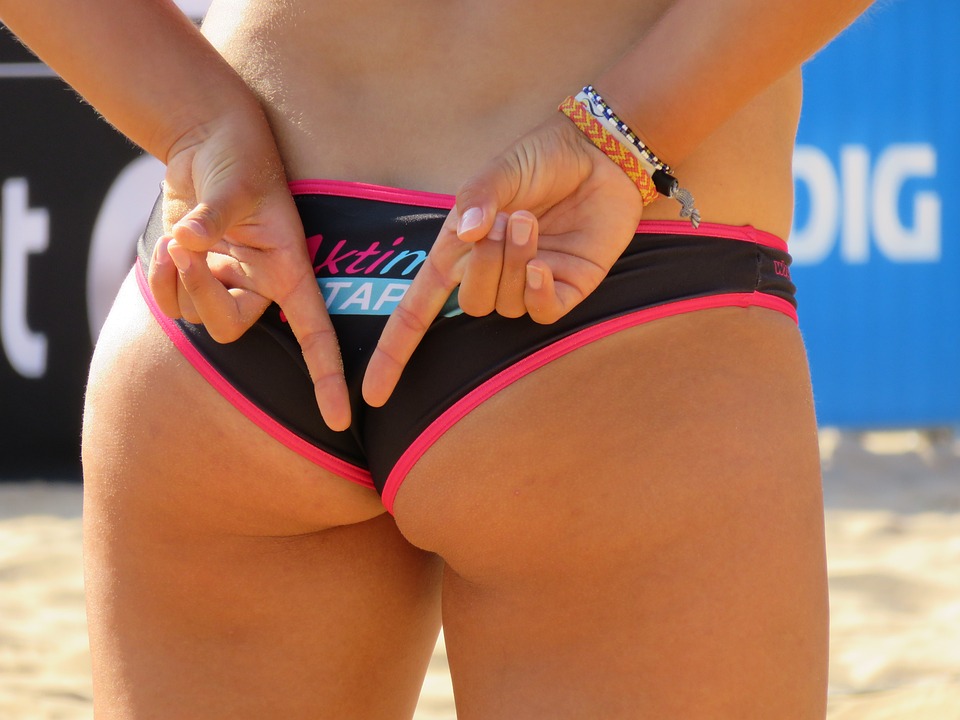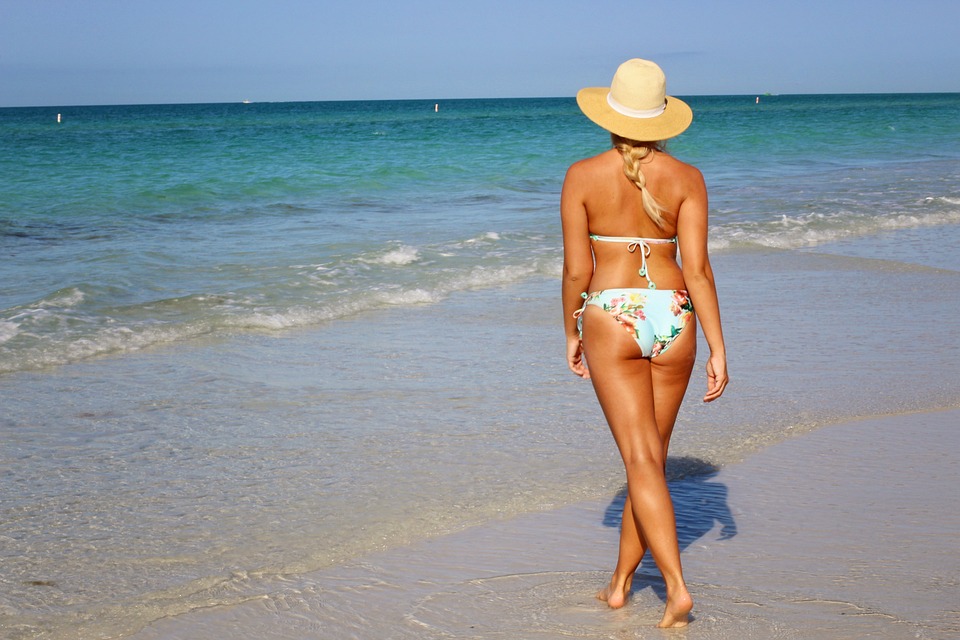The Perplexing Problem of Bikini Line Peeling Skin
Do you ever find yourself feeling perplexed by the annoying issue of peeling skin on your Bikini Line? You’re not alone. Many women experience this frustrating problem, which can be both uncomfortable and embarrassing. But fear not, for in this article, we will delve into the causes of Bikini Line peeling skin and explore effective remedies to help you restore smooth and healthy skin in this delicate area.
Understanding the Causes of Bikini Line Peeling Skin
To tackle any problem, it’s crucial to understand its root causes. When it comes to Bikini Line peeling skin, several factors can contribute to this perplexing issue. Let’s explore some of the most common culprits:
1. Shaving: One of the main causes of peeling skin on the Bikini Line is shaving. Regular shaving can lead to irritation and dryness, resulting in the skin’s outer layer peeling off.
2. Friction: Constant friction from tight clothing, such as underwear or bathing suits, can also cause skin peeling on the Bikini Line. The rubbing of fabric against the skin can lead to irritation and subsequent peeling.
3. Chemical irritants: Certain harsh soaps, detergents, or even hair removal creams can irritate the delicate skin in the Bikini area, leading to peeling skin.
4. Dryness: Lack of moisture in the skin can cause it to become dry and flaky, leading to peeling. This can be exacerbated by harsh weather conditions or excessive use of drying products.
5. Allergic reactions: Sometimes, peeling skin on the Bikini Line may be a result of an allergic reaction to certain fabrics, laundry detergents, or even the materials used in sanitary pads or tampons.
Effective Remedies for Bikini Line Peeling Skin
Now that we understand the causes, let’s explore some effective remedies to address the issue of peeling skin on the Bikini Line:
1. Gentle exfoliation: Regular but gentle exfoliation can help remove dead skin cells and prevent them from accumulating, which can reduce peeling. Use a mild exfoliating scrub specifically designed for sensitive areas to avoid further irritation.
2. Moisturize, moisturize, moisturize: Hydrating the skin is vital to combat peeling. Apply a fragrance-free moisturizer to your Bikini Line daily, preferably after showering or exfoliating, to lock in moisture and promote skin healing.
3. Choose the right shaving technique: If shaving is causing your peeling skin, consider using a different shaving technique. Opt for a sharp, clean razor and use a moisturizing shaving cream or gel to minimize irritation. Shave in the direction of hair growth and avoid going over the same area repeatedly.
4. Wear loose-fitting clothing: To minimize friction, opt for loose-fitting underwear and clothing made from breathable fabrics. This will reduce irritation and allow your skin to breathe.
5. Avoid irritants: Be mindful of the products you use on your Bikini Line. Opt for gentle, fragrance-free soaps and detergents and avoid using hair removal creams or other harsh chemicals in the area.
Preventing Future Peeling Skin
While treating peeling skin is essential, taking preventive measures can help you avoid future recurrences. Here are some tips to prevent Bikini Line peeling skin:
1. Moisturize daily: Make moisturizing a part of your daily routine to keep the skin in the Bikini area hydrated and less prone to peeling.
2. Exfoliate regularly: Gentle exfoliation once or twice a week can help prevent a buildup of dead skin cells, reducing the chances of peeling.
3. Avoid excessive shaving: Consider alternatives to frequent shaving, such as waxing or using hair removal creams, to minimize irritation and peeling.
4. Choose the right clothing: Opt for breathable, cotton underwear and loose-fitting clothing to minimize friction and irritation on the Bikini Line.
5. Stay hydrated: Drinking an adequate amount of water can help keep your skin hydrated from within, reducing the chances of dryness and peeling.
When to Seek Medical Advice
In most cases, peeling skin on the Bikini Line can be effectively managed with the remedies and preventive measures mentioned above. However, if the problem persists, worsens, or is accompanied by severe itching, pain, or unusual discharge, it is advisable to consult a healthcare professional. They can rule out any underlying medical conditions or infections that may require specific treatment.
In conclusion, the perplexing problem of Bikini Line peeling skin can be addressed by understanding its causes and implementing effective remedies. By adopting a gentle skincare routine, moisturizing regularly, and taking preventive measures, you can restore smooth and healthy skin to your Bikini Line, allowing you to feel confident and comfortable.
Top Questions About Bikini Line Peeling Skin
What causes peeling skin in the Bikini Line?
Peeling skin in the Bikini Line can be caused by various factors including:
1. Friction: Constant rubbing of the skin due to tight clothing or repetitive movement can lead to peeling.
2. Shaving or waxing: Removing hair in the Bikini area can cause irritation and subsequent peeling.
3. Dryness: Lack of moisture in the skin can make it more prone to peeling.
4. Allergic reactions: Some individuals may have an allergic reaction to certain products or materials used in the Bikini area, leading to peeling.
5. Infections: Fungal or bacterial infections can cause peeling skin in the Bikini Line.
Important information:
– Friction and shaving/waxing are common causes of peeling skin in the Bikini Line.
– Dryness and allergic reactions can also contribute to this condition.
– Infections, such as fungal or bacterial infections, can lead to peeling skin in the Bikini area.
How can I prevent peeling skin in the Bikini Line?
To prevent peeling skin in the Bikini Line, consider the following measures:
1. Moisturize: Regularly apply a fragrance-free, hypoallergenic moisturizer to the Bikini area to keep the skin hydrated and prevent dryness.
2. Avoid tight clothing: Opt for loose-fitting underwear and clothing to reduce friction and irritation in the Bikini area.
3. Choose gentle hair removal methods: If shaving or waxing, ensure that you use sharp, clean razors or visit a professional waxing salon to minimize irritation.
4. Test products: Perform a patch test on a small area of your skin before using any new products in the Bikini area to check for any potential allergic reactions.
5. Maintain good hygiene: Keep the Bikini area clean and dry, and avoid sharing personal items such as towels or underwear.
Important information:
– Moisturizing the Bikini area regularly helps prevent peeling skin.
– Avoiding tight clothing and choosing gentle hair removal methods can also be beneficial.
– Testing products and maintaining good hygiene are additional preventive measures.
What can I do to treat peeling skin in the Bikini Line?
If you are experiencing peeling skin in the Bikini Line, try the following remedies:
1. Gentle cleansing: Wash the affected area with a mild, fragrance-free cleanser and lukewarm water to remove any irritants and maintain cleanliness.
2. Moisturize: Apply a gentle moisturizer to the Bikini area after cleansing to soothe and hydrate the skin.
3. Avoid scratching: Resist the urge to scratch or peel off the skin, as it can worsen the condition and lead to potential infection.
4. Ointments or creams: Over-the-counter hydrocortisone creams or ointments can help reduce inflammation and itching in the Bikini area.
5. Consult a healthcare professional: If the peeling persists or is accompanied by severe discomfort or other symptoms, consult a dermatologist or healthcare professional for further evaluation and treatment options.
Important information:
– Gentle cleansing and moisturizing are essential for treating peeling skin in the Bikini area.
– Avoid scratching the affected area to prevent worsening the condition.
– Over-the-counter hydrocortisone creams can be used, but consulting a healthcare professional is recommended for persistent or severe cases.
Are there any home remedies for peeling skin in the Bikini Line?
While home remedies may provide temporary relief, they should not replace medical advice. However, you can try the following:
1. Aloe vera gel: Apply pure aloe vera gel to the affected area to soothe and moisturize the skin.
2. Cold compress: Place a clean, cold compress on the Bikini area to reduce inflammation and relieve itching.
3. Oatmeal bath: Taking a lukewarm bath with colloidal oatmeal can help alleviate itching and promote healing of the peeling skin.
Important information:
– Home remedies like aloe vera gel, cold compress, and oatmeal baths can provide temporary relief.
– Medical advice should still be sought for proper diagnosis and treatment.
When should I seek medical attention for peeling skin in the Bikini Line?
It is advisable to seek medical attention for peeling skin in the Bikini Line under the following circumstances:
1. Severe discomfort: If the peeling skin is causing significant pain, itching, or discomfort, it is best to consult a healthcare professional for proper evaluation and treatment.
2. Persistent symptoms: If the peeling persists for an extended period despite home remedies and preventive measures, medical attention is warranted.
3. Signs of infection: If the peeling skin is accompanied by redness, swelling, pus, or an unpleasant odor, it may indicate an infection and should be evaluated by a healthcare professional.
Important information:
– Medical attention is necessary if the peeling skin causes severe discomfort.
– Persistent symptoms or signs of infection should also prompt a visit to a healthcare professional.
1. Bikini Line Peeling Skin is Always a Sign of an Underlying Medical Condition
Contrary to popular belief, peeling skin in the Bikini Line area is not always indicative of an underlying medical condition. While it can be a symptom of certain skin conditions or infections, such as contact dermatitis or folliculitis, it is not the sole reason for peeling skin. In many cases, peeling skin in the Bikini Line area can be attributed to external factors such as friction, excessive moisture, or the use of harsh chemicals. Therefore, it is important not to jump to conclusions and assume that peeling skin in this area always indicates a serious health issue.
2. Peeling Skin in the Bikini Line Area is Always Caused by Poor Hygiene
Another common misconception is that peeling skin in the Bikini Line area is solely caused by poor hygiene. While inadequate hygiene practices can contribute to certain skin conditions that may result in peeling skin, it is not the only factor at play. Factors such as excessive sweating, tight clothing, or allergic reactions to certain fabrics or products can also contribute to peeling skin in this area. It is important to understand that peeling skin can occur even in individuals who adhere to proper hygiene practices, so it is not always an indication of poor cleanliness.
3. Bikini Line Peeling Skin is Always a Result of Shaving or Waxing
Many people assume that peeling skin in the Bikini Line area is solely caused by shaving or waxing. While these hair removal methods can indeed contribute to skin irritation and subsequent peeling, they are not always the primary cause. Other factors, such as an allergic reaction to certain products used during hair removal or an underlying skin condition, can also lead to peeling skin in this area. It is important to recognize that the cause of peeling skin in the Bikini Line area can vary from person to person and may not always be directly related to hair removal practices.
4. Peeling Skin in the Bikini Line Area is Always a Permanent Condition
One misconception is that peeling skin in the Bikini Line area is always a permanent condition that cannot be resolved. However, this is not entirely accurate. In many cases, peeling skin in this area can be temporary and can improve with proper care and treatment. By addressing the underlying cause, such as using gentle skincare products, avoiding irritants, or seeking appropriate medical treatment, the peeling skin can often be alleviated. It is important not to assume that peeling skin in the Bikini Line area is an irreversible condition and to seek appropriate guidance for proper management.
5. Peeling Skin in the Bikini Line Area is Only a Cosmetic Concern
While peeling skin in the Bikini Line area may appear to be merely a cosmetic concern, it can also be an indication of an underlying health issue. While not every case of peeling skin requires immediate medical attention, it is important to be aware that it can be a symptom of certain skin conditions or infections. Monitoring the condition, observing any accompanying symptoms, and seeking medical advice when necessary is vital to ensure optimal health. It is essential to understand that peeling skin in the Bikini Line area should not be dismissed solely as a cosmetic concern without considering potential underlying causes.


